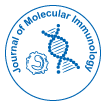Our Group organises 3000+ Global Conferenceseries Events every year across USA, Europe & Asia with support from 1000 more scientific Societies and Publishes 700+ Open Access Journals which contains over 50000 eminent personalities, reputed scientists as editorial board members.
Open Access Journals gaining more Readers and Citations
700 Journals and 15,000,000 Readers Each Journal is getting 25,000+ Readers
Indexed In
- RefSeek
- Hamdard University
- EBSCO A-Z
Useful Links
Related Subjects
Share This Page
Ghalib Alkhatib

Ghalib Alkhatib
Virology/Bacteriology
Drug Discovery Division
Southern Research Institute
USA
Biography
Dr. Alkhatib obtained a Ph.D. in Molecular Virology from McGill University in Montreal, Canada in 1989. He completed his postdoctoral work at the Biotechnology Research Institute (BRI) in Montreal, where his research focused on the molecular immunology of natural killer (NK) cells. Subsequently, Dr. Alkhatib served as Visiting Fellow in the Laboratory of Viral Diseases at the National Institutes of Health in Bethesda, Maryland from 1995 to 1998. During his fellowship, he identified and characterized CCR5 as the coreceptor for the macrophage-tropic (M-tropic) HIV-1 isolates. As a result of this groundbreaking research, CCR5 is now the target for the development of drugs that block HIV-1 infection. Dr. Alkhatib has held several academic positions, including Assistant Professor in the Department of Microbiology and Immunology at the Indiana University School of Medicine in Indianapolis from 1997 to 2002 and Associate Professor in the Department of Microbiology and Immunology at the Indiana University School of Medicine from 2003 to 2010. Dr. Alkhatib joined Southern Research Institute in July 2012, having previously served since 2010 as Professor in the Department of Biomedical Sciences and Center of Excellence for Infectious Diseases in the Paul L. Foster School of Medicine at Texas Tech University Health Sciences Center in El Paso, Texas.
Research Interest
Dr. Alkhatib’s research is focused on understanding how interaction of HIV-1 (AIDS virus) and HTLV-1 (human T cell leukemia virus) envelope glycoproteins with host cell receptors lead to membrane fusion and viral entry. Analyzing the mechanisms of retroviral entry is a key step in the development of anti-viral agents. Specifically, Dr. Alkhatib’s research focuses on the mechanisms of genetic resistance to HIV-1 infection. HIV-1 requires CD4 and a coreceptor (CCR5 or CXCR4) for entry into susceptible host cells. CCR5 and CXR4 belong to the family of seven transmembrane spanner proteins. A naturally occurring frame-shift mutation caused by a 32 base-pair deletion (Δ32) in the human CCR5 gene is highly associated with protection against HIV-1. CCR5Δ32 is a loss-of-function mutation that abolishes cell surface expression of the HIV coreceptor CCR5 and provides resistance to HIV-1 infection. Published work from Dr. Alkhatib’s laboratory suggest that at least two distinct mechanisms may account for genetic resistance to HIV-1 conferred by CCR5Δ32: loss of wild type CCR5 surface expression and generation of CCR5Δ32 truncated protein, which functions as a scavenger of both CCR5 and CXCR4. Understanding how CCR5Δ32 interacts with the HIV coreceptors will lead to novel findings concerning coreceptor structure-function that may be utilized for the design of drugs that mimic the CCR5Δ32 activity. Dr. Alkhatib’s laboratory is actively pursuing the expression and purification of sufficient quantities of CCR5 protein for studying its crystal structure. Since the discovery of CCR5 as a HIV coreceptor, efforts to express large quantities of CCR5 have promising. The crystal structures of CCR5-bound chemokine or gp120 are not yet resolved. This can be a great project for hard working graduate students. Members in the laboratory are currently examining a number of CCR5 mutants to analyze structure/function relationship of this extraordinary HIV coreceptor. Our long term goal is to map the critical determinants of CCR5 involved in HIV-1 entry into the target cells (please see attached video clip). During the course of analysis of genetic resistance to HIV members of the lab isolated unique HIV-1 envelope glycoproteins from infected individuals that are homozygous for the CCR5Δ32 mutation. We consider these envelopes as unique because they were cloned from viruses that replicated in CCR5-deficient cells/individuals. Sequence analysis of these unique envelope glycoproteins indicated unique polymorphisms in gp120 and gp41 that might account for the functional differences in their fusion activities. Current projects in the lab focus on these functional differences.
Other areas of interest in Dr. Akhatib’s laboratory include the mechanism of viral entry by the human T cell leukemia virus type 1 (HTLV-1). Our long term goal is to determine the mechanism of preferential tropism of HTLV-1 to CD4+ T lymphocytes in vivo. It has previously been determined that the erythrocyte glucose transporter protein (GLUT-1) is a cellular receptor for HTLV-1. GLUT-1 is expressed in almost all cell types and did explain HTLV-1 preferential tropism to CD4+ T cells in vivo, however, it could represent one component of the HTLV-1 receptor complex. The GLUT-1 receptor is a multi-spanner membrane protein that crosses the plasma membrane 12 times. The common use by HIV-1 and HTLV-1 of these multi-spanning membrane proteins may lead to the identification of common retroviral entry mechanisms and may lead to design of drugs that inhibit retroviral entry.

 Spanish
Spanish  Chinese
Chinese  Russian
Russian  German
German  French
French  Japanese
Japanese  Portuguese
Portuguese  Hindi
Hindi 